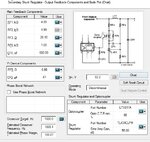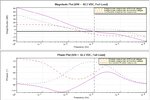adnan012
Advanced Member level 1
hi,
I want to know, how input stage fuse values are selected in a flyback converter? If Ipeak at primary side is 1 amp then what should be the value of fuse current and also voltage ratings for universal input range (90 -220 Vac) ?
I want to know, how input stage fuse values are selected in a flyback converter? If Ipeak at primary side is 1 amp then what should be the value of fuse current and also voltage ratings for universal input range (90 -220 Vac) ?

